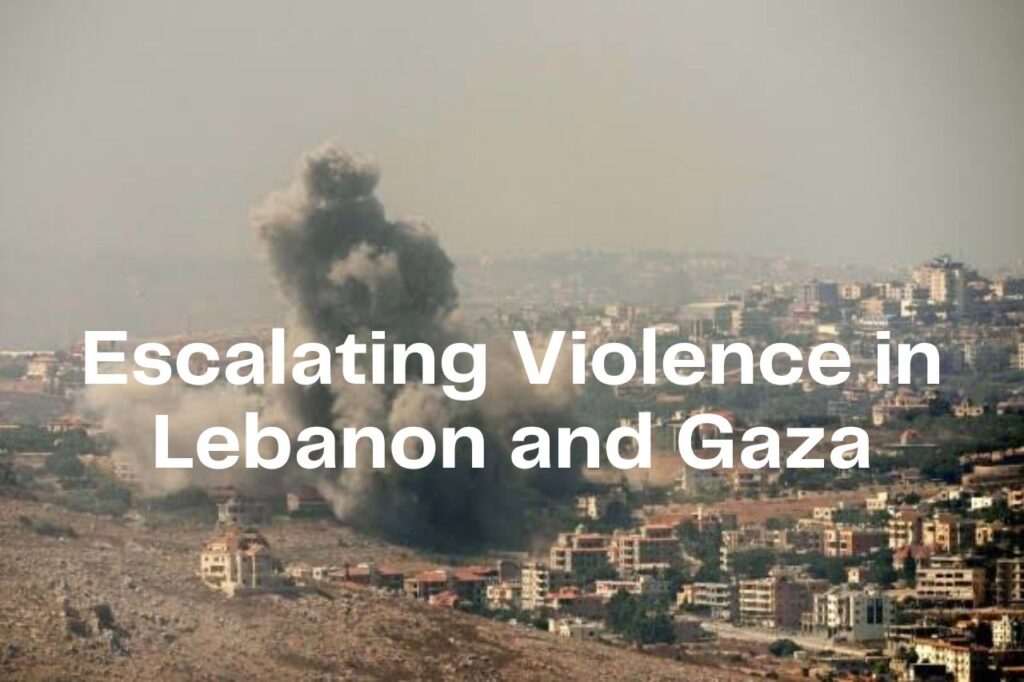The recent escalation in violence highlights the urgent need for a ceasefire and a lasting solution. As we navigate this complex conflict, it’s crucial to prioritize the preservation of human life and the protection of civilians. We must work towards a negotiated settlement that respects the rights and dignity of all parties involved. (Kiran Kashif)
Global concern and condemnation have been prompted by the recent spike in violence throughout Lebanon and the Gaza Strip, which has led to an increasing number of victims. At least seven individuals in Lebanon and thirty-two in Gaza, including five children, have been killed in Israeli attacks. Global leaders have called for a de-escalation in response to the escalation.
A Brief History of the Israeli-Palestinian Conflict
The establishment of an independent Palestinian state in addition to the State of Israel has long been viewed as the solution to the Israeli-Palestinian problem. But this answer is still elusive.
The concept of a two-state solution dates back to the 1947 UN partition plan, which allocated 56% of the land to a Jewish state and 43% to an Arab state. The remaining land, including Jerusalem, was to be under international control.
The Oslo Accords and the Peace Process
The Oslo Accords, which were signed in the 1990s, sought to provide a framework for peaceful relations between Israel and Palestine. As the representative of the Palestinian people, the Accords recognized the Palestinian Liberation Organization (PLO) and created the Palestinian Authority (PA) to rule over portions of Gaza and the West Bank.
However, the Oslo Accords did not spell out a clear end goal, and the peace process has been stalled for decades. Settlement expansion, violence, and political tensions have hindered progress.
The Current State of the Conflict
Today, the two-state solution is still widely advocated for by the international community. However, many argue that this solution is no longer viable due to the expansion of Israeli settlements, the fragmentation of Palestinian territory, and the lack of credible leaders on both sides.
Some argue that a one-state solution, where all citizens of Israel and Palestine have equal rights, is a more realistic and desirable goal. Others believe that a two-state solution is still possible, but it would require significant concessions from both sides.
Perspectives on the Two-State Solution
As someone who has followed the Israeli-Palestinian conflict closely, I believe that the two-state solution is worth exploring, but it’s essential to acknowledge the significant challenges and complexities involved.
The two-state solution has been the focus of international efforts for decades, but it has yet to materialize. The expansion of Israeli settlements, the fragmentation of Palestinian territory, and the lack of credible leaders on both sides have hindered progress.
On the other hand, a one-state solution could provide a more inclusive and equitable framework for all citizens. However, this solution would require significant concessions from both sides and a willingness to compromise on issues like security, borders, and governance.
Ultimately, the key to a lasting solution lies in addressing the underlying issues driving the conflict, including the rights of Palestinian refugees, the status of Jerusalem, and the need for a negotiated settlement that respects the rights and dignity of all parties involved.
As the international community continues to advocate for a two-state solution, it’s essential to acknowledge the complexities and challenges involved. A lasting solution will require a willingness to compromise, a commitment to justice and equality, and a recognition of the rights and dignity of all parties involved.




